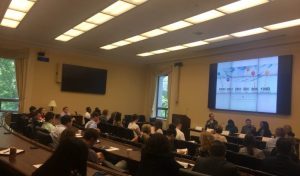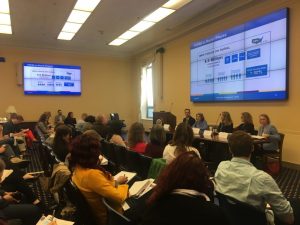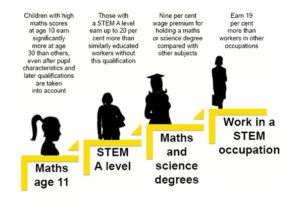Online schools give you a chance to earn great degrees from high-quality schools while fitting your coursework around your schedule. However, what if you aren’t sure which degree is right for you? The question, “What do you want to be when you grow up?” is something that people well into their later years sometimes struggle to answer. Fortunately, thanks to high demand for degrees in STEM subjects-science, technology, engineering, and math-you can start a good career and maybe discover your destiny along the way.
When compared to the rest of the world, the United States is losing its edge in math and science. Take a look at these statistics from the National Math + Science Initiative:
* The U.S. may be short as many as three million highly skilled STEM workers by 2018.
* Jobs in computer systems design and related fields are projected to increase 45 percent through 2018.
* Workers with STEM majors make more than workers with non-STEM majors. A petroleum engineer makes $120,000 annually. In comparison, a person working as a counseling psychologist makes $29,000.
* The U.S. share of world scientists and engineers has declined from 40 percent in 1975 to just 15 percent in the present day.
* In China, 30 percent of students graduate with bachelor’s degrees in engineering. In the U.S., only 5 percent of students in both traditional and online schools complete a major in engineering.
With such an extreme shortage of skilled STEM workers and such high demand for STEM-educated workers in today’s job market, earning a degree in a STEM subject makes good financial sense for today’s graduates. Take a look at the six most in-demand STEM jobs and see if any of these sound right for you:
1. Biomedical engineers. As a biomedical engineer, you may design artificial organs, replacement joints, or communications devices.
2. Medical scientists (except epidemiologists). Medical scientists conduct research, such as clinical trials, to improve human health.
3. Software developer. Software development can mean creating software for consumers. It can also involve creating customized software for businesses or mobile apps.
4. Biochemists and biophysicists. Biochemists study chemical reactions in living things, such as what occurs when the human body processes food. Biophysicists study the mechanical and electrical energy properties of living cells.
5. Database administrators. As more companies and government agencies start to accumulate masses of data, keeping that data organized, accessible, and protected could mean many job opportunities.
6. Network administrators. Networks within businesses, educational institutions, and healthcare facilities need administrators to delegate resources, promote functioning, and stop hackers.
If you have always been good at math and science, then you should consider a cutting-edge career in a STEM field. Graduates that earn STEM degrees from traditional and online schools could have great job and salary opportunities. Even better, they could be the architects of some of the greatest discoveries of our time.




